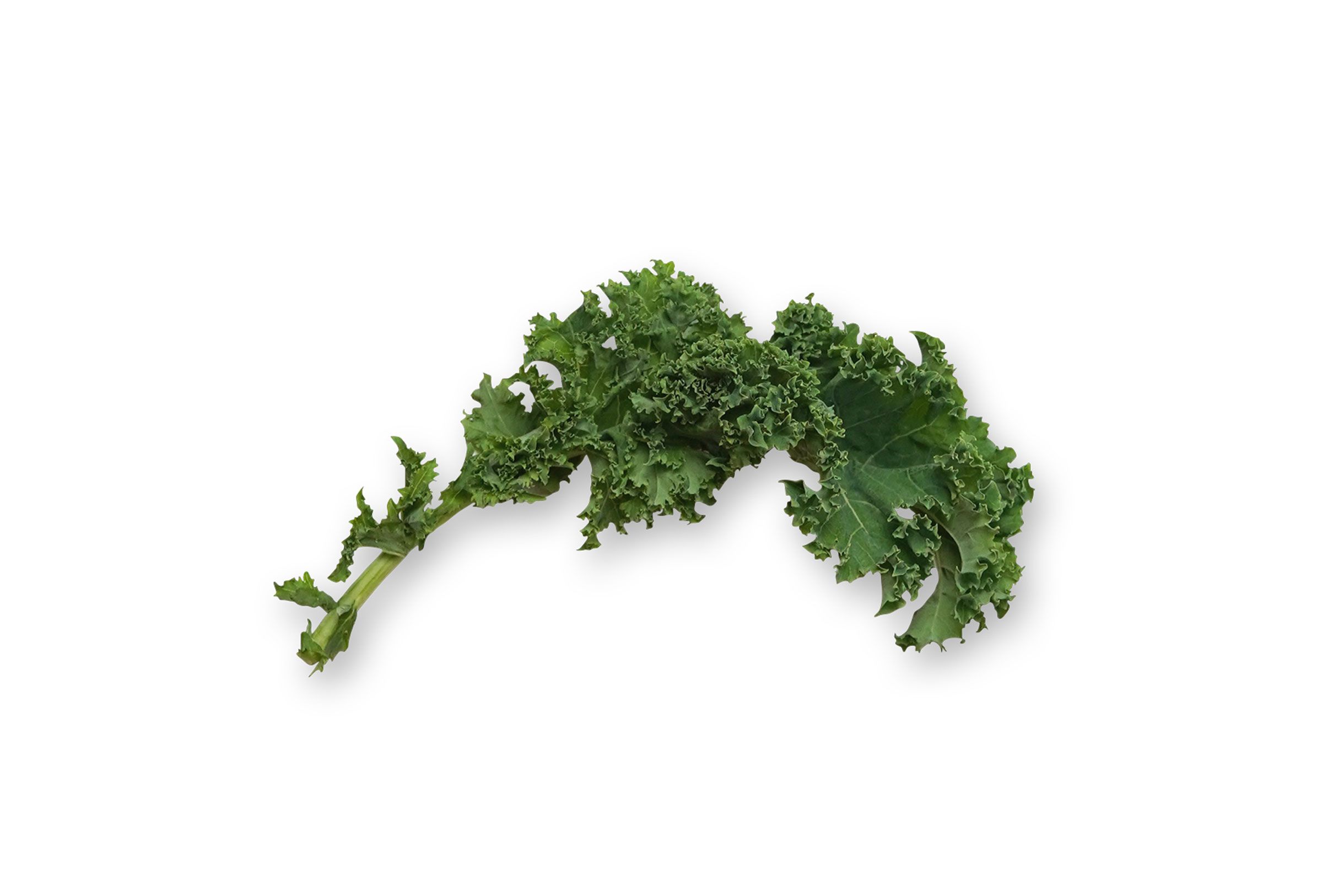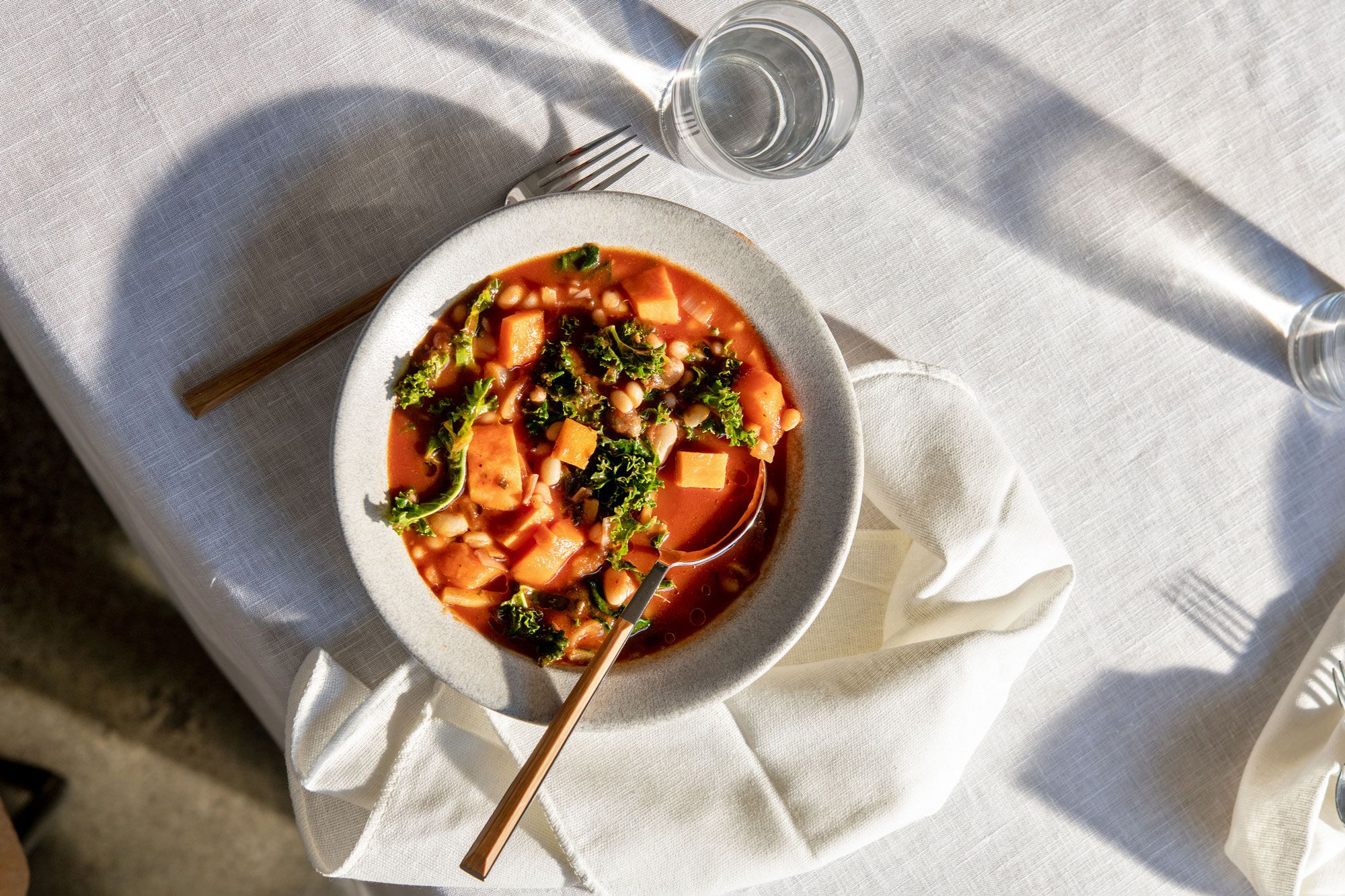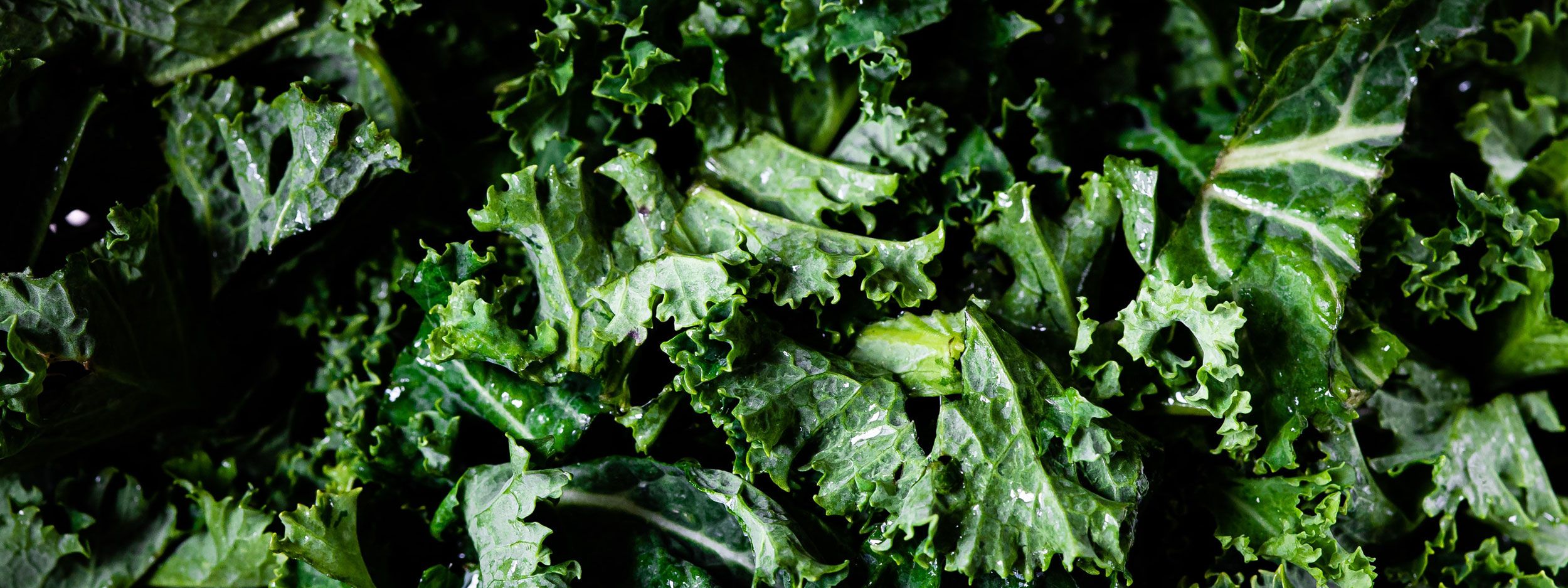Kale
King of cabbage
Intro
Kale is an incredibly popular, highly nutritious winter vegetable. It's packed full of antioxidant plant substances that can help protect the body from infections and chronic illnesses. It can be enjoyed in its pure form. In a smoothie or as chips. Kale is a real superfood.
Kale is harvested after the first frost, which lends it its earthy-sweet flavour.

What is kale?
Kale belongs to the family of Cruciferous plants and is a cultivated form of vegetable cabbage (Brassica oleracea). Kale leaves are dark green to violet-brown. The flavour is spicy-earthy. Kale contains a bit of sweetness too, which is attributed to its harvest around the frost: the low temperatures mean that hardly any starch (i.e. bitterness) is formed. However, photosynthesis, which continues to take place, increases the formation of glucose, which gives kale its sweet note.

Where does kale come from?
Kale is known around the world, and not, as many people presume, originally from Germany. Like many other wild kales, Kale comes from warmer regions around the Mediterranean where it was cultivated in the 3rd century and used as a healing substance.
Which varieties are there?
The most well known kale types:
- Frostara
- Half-high green curly
- Cadet
- Lark's Tongue
- Nero di Toscana
- Red kale
- Westerner Winter
- Winnetou
- Winter bor
When is kale in season?
End of September to early May
Our tips for how to prepare kale:
As a side dish, in pasta dishes, in oven veggies, stews, risottos, salads or as kale chips.
Kale nutrition facts per 100g:
| Typical values | 100g |
|---|---|
| Calories | 50 |
| Fat | 0.7g |
| Carbohydrates | 10g |
| Fibre | 2g |
| Sugar | 0g |
| Protein | 3.3g |
Nutrients found in kale:
Vitamins: Beta-Carotene, Vitamin C, Vitamin E, Vitamin K and Folic Acid
Minerals: Sodium, Potassium, Calcium, Magnesium, Phosphate, Iron and Zinc
Secondary plant substances: Flavonoide & Carotinoide
Fats: Omega-3-Fettsäure
*Kale ist not just a nutrient bomb, its also an alkaline food.

